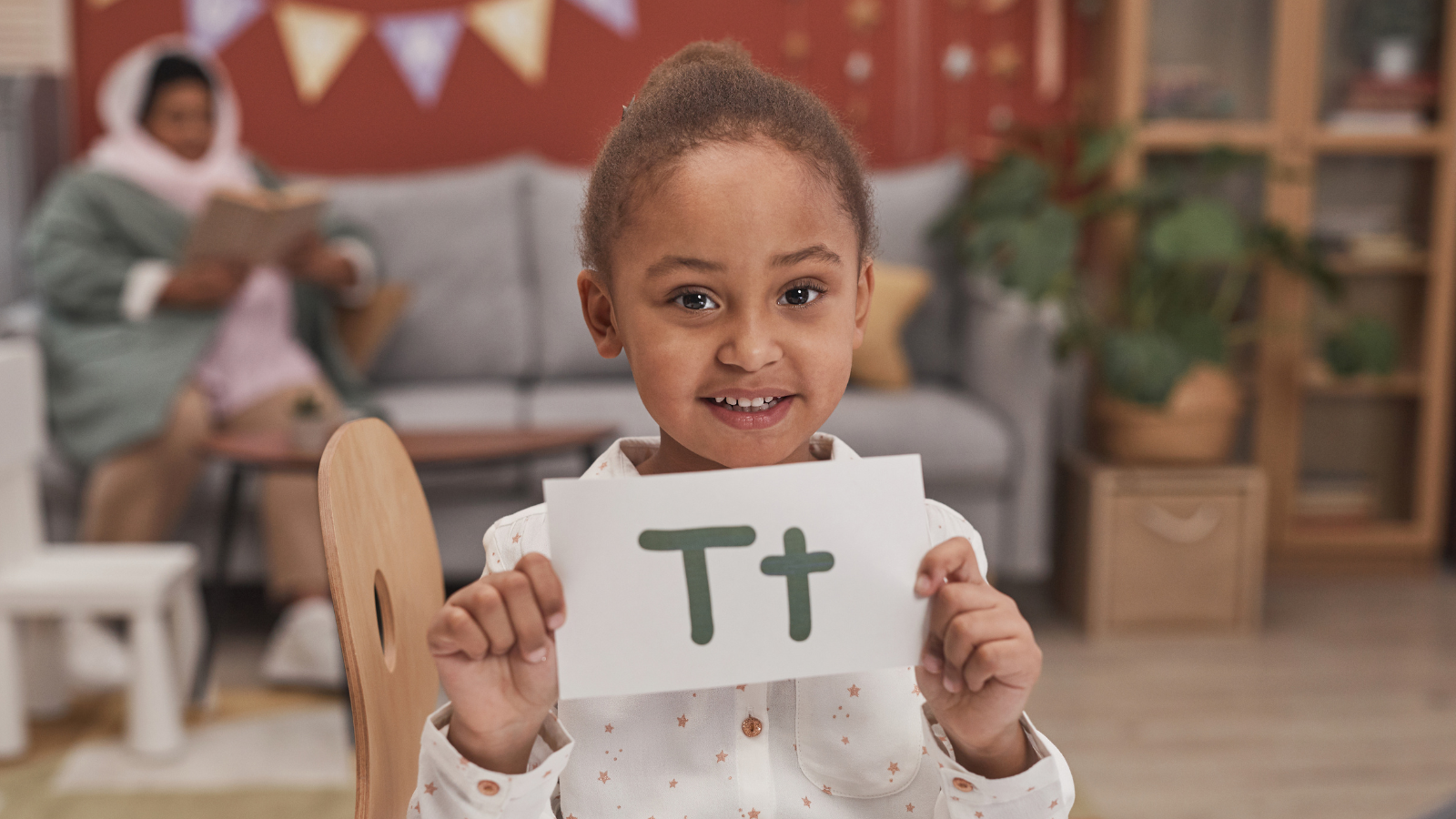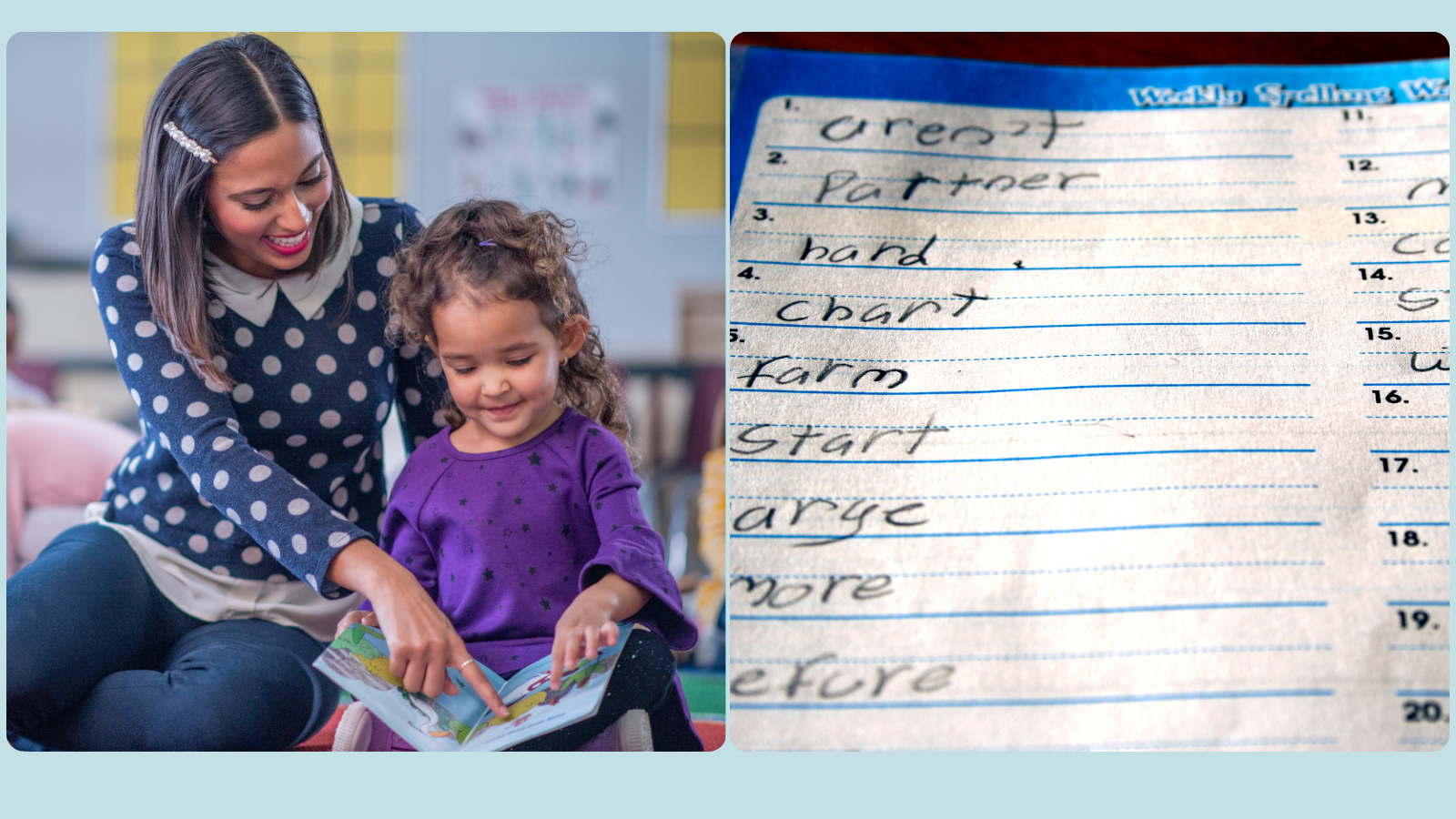12 tactics we use to help beginning readers learn to read, with examples of exactly what we do in practice to help at-risk students
It’s good to understand the big picture…
To teach beginners how to read, it helps to have a good grasp of the fundamental concepts underpinning the science of reading. This includes an understanding of:
- why learning to read in the first years of school is so important, and what works;
- how learning to read physically rewires the brain (and why beginners’ brains are different to the the brains of expert readers);
- useful mental models, like the Simple View of Reading; and
- the key elements we should include in a program for beginning readers.
To spot and support beginning readers at heightened risk of Developmental Language Disorder (DLD) or dyslexia (or both), it also helps to know about:
- risk factors for language and learning disorders;
- known links between phonological awareness deficits, unclear speech and later reading issues;
- oral language development, generally, and specific oral language comprehension issues that can contribute to reading comprehension issues;
- population-level effects of factors like socioeconomic disadvantage;
- what we need to assess to pick up and support students at risk of reading difficulties as early as possible; and
- how to understand test scores and the jargon professionals use to describe reading difficulties, like dyslexia, and language disorders, including DLD.
This is all useful information for anyone working with beginning readers.
…BUT we also need to know what to do in the classroom and clinic.
Understanding the science is one thing. But translating it into practice – with struggling students in front of us, and all the time constraints and ‘messiness’ of the real world – is just as important.
Recently, we completed a review of our literacy practices for at-risk beginning readers. As part of this process, we came across a terrific paper by Professor Linnea Ehri, which, along with our clinical reflections, helped us to identify 12 small but significant things we could standardise across our practice to help our at-risk beginners.
We thought it would be helpful to share these ideas, along with the specifics of what we do in practice:
- We use mnemonics to introduce basic grapheme-speech sound (phoneme) links. Mnemonics help link each grapheme’s shape to an object they resemble and have names beginning with the phoneme linked to the grapheme. There are lots of good resource options, including mnemonics produced by the Reading Doctor and Letterland ABC. We like these embedded picture mnemonics from Spelfabet.
- We all use one tried-and-tested grapheme-phoneme sequence to introduce and revise high frequency letter-sound links in a methodical, sequenced way; and we have reorganised all our resources to align with it:
- Having used a variety of sometimes conflicting sequences in the past, we have now adopted the Sounds~Write sequence across our practice because of its logic and alignment with the science of reading. We have summarised the Sounds~Write and some other sequences here. There are of course many other options. But to keep things simple for beginners, choose a single good sequence, and then stick with it.
- To make things more efficient for students and families (and to help with home practice), we made 15 free videos introducing basic and extended code grapheme-sound links in a standard Australian accent.
- As with most reading professionals, we use a range of resources to support beginners, including several series of decodable books and other materials published by different publishers. We have re-organised all our resources by goal so they match our single preferred sequence. It was a lot of work initially, but we can now support beginners goal-by-goal, step-by-step, and cycle through goals over time, to give students distributed and spaced practice of the same goal until mastery.
- To start with, we teach only one speech sound per grapheme. Some reading programs (e.g. Spalding) teach students multiple speech sounds per grapheme, e.g. by linking the sounds:
- /s/ and /z/ to the letter <s> (as in “sun” and “is”, respectively); and
- /ae/, /eɪ/ and /a/ (as in “mat”, “made”, and “bath”) to the letter <a>.
We no longer teach this way, for reasons explained here.
- When teaching beginners the “stop” consonants /p, b, t, d, k, g/, we do not add a schwa sound (an unstressed “uh” vowel) to the consonant:
- For example, we say /t/ (not “tuh”), /p/ (not “puh”), /k/ (not “kuh”).
- This makes it easier for beginners to blend speech sounds together to make words, for example decoding “tap” into /t/ +/ae/ + /p/ then blending the sounds to say /taep/ (rather than “tuhapuh”).
- You can hear examples of us modelling each of these speech sounds in our free letter-sound videos.
- Rather than using abstract tokens or blocks, we teach key phonological awareness skills with graphemes and written words. For phoneme blending and word segmenting work – both skills associated with reading outcomes – we include the graphemes and written words. For example:
- when blending speech sounds together to form words (e.g. /m/+/ae/ +/t/), we present the students with the written word “mat”.
- When breaking words up into their speech sounds, we present the student with the written word, e.g. “mat”, before helping the student to break the spoken word (e.g. /maet/) into its speech sounds /m/, /ae/ and /t/, represented by the letters <m>, <a>, and <t>, respectively.
- We keep these resources low-tech and simple: we like the Spelfabet movable alphabet cards and magnetic letters. But we sometimes just write letters on cards.
- To make early sound-blending easier for beginners, we choose consonant-vowel-consonant (CVC) words composed of basic code graphemes that start with the continuants /f, h, l, m, n, r, s, v/ or /z/:
- “Continuants” like these can be held and blended with vowel and other sounds without breaking the speech stream. This makes them easier to blend for beginners, e.g. “mmmmmmmmaaaaaannnnnnnnn”.
- We avoid introducing the continuants /θ/ (as “thing”), /ð/ (as in “that”) and /ʃ/ as in (“ship”) at first. This is partly for developmental speech reasons (especially for students with speech sound disorders), and partly because these sounds are represented by digraph (2-letter) graphemes (e.g. “th” and “sh”), which are often introduced after early CVC blending practice has begun.
- You can see several examples of the specific resources we use to do this work here.
- We start blending and word decoding practice as soon as possible – as soon as our students have learned their first unit/batch of grapheme-phoneme links. When beginners have mastered CVC blending in words starting with continuants, you can transition to decoding:
- CVC words that start with stop and other consonants; and
- consonant-consonant-vowel-consonant (CCVC) and consonant-vowel-consonant-consonant (CVCC) words starting with a continuant.
- For beginning readers who cannot segment CVC words into spoken speech sounds, we use a mirror and direct them to look at their mouth positions and movements as they say the words very slowly. For example, by stretching out “mmmmmmmmmaaaaaaaaaat”, children can look in the mirror see their mouths moving: lips together for /m/, to open mouth position for /ae/ and then tongue tip touching the alveolar ridge above the top teeth for /t/ – three movements, marking the three speech sounds that make up the word “mat”.
- We insist that beginners read aloud and with their eyes on the words they are reading, as they read them:
- Beginners should always read aloud to help them to establish connections between spellings and spoken words, and to pronounce unfamiliar words.
- We want our students to look at the words as they decode, rather than pictures, us, games, or anything else! To help, we use resources:
- with few or no pictures (here are some examples); and
- give students feedback and reinforcement by marking the page we are reading, rather than with distracting games and reinforcements.
- Once beginners can decode basic CVC words (and/or CCVC and CVCC words), we give them lots of practice:
- reading the words in sentences so that beginners understand meanings and sentence syntax. This is particularly important for verbs and function words referring to things that beginning readers can’t see or touch (e.g. words like “did”, “am”, “hid”, and “had”). We use a range of sentence-level resources for this work, as well as short decodable texts without pictures; and
- reading the same decodable texts repeatedly to increase decoding and word recognition efficiency (an important precursor to the reading fluency work we will work on once the student has mastered the basic code and other foundational reading skills).
- When working on high frequency, irregular sight words, like “said”, “the”, “was”, “have”, “of”, and “one”, introduce the words, and then have beginners read the words, in sentences composed of otherwise decodable words made up of grapheme-sound links the student has been taught:
- Many high frequency words, which are often taught as ‘sight words’, are in fact fully decodable with the basic code (e.g. “am”, “if”, “off”, “had”). Many others are partially decodable from the first and last consonants (e.g. “said”, “put” and “talk”). You can read more about sight word teaching – including our preferred list of words to teach – here.
- Do not just drill sight words in isolation with flashcards. In our free high frequency sight word resources, for example, we introduce each word and then practice reading the word in multiple sentences.
- We balance decoding work with encoding (spelling) work matched to our decoding goals. Decoding and encoding are two sides of the same coin. Both are important for reading success.
- Learning to decode the word “cat” requires the child to break the word into letters (<c>, <a>, <t>), identify the speech sounds associated with each letter (/k, ae, t/) and then blend them together, left to right (/kaet/) to pronounce the word “cat”.
- Spelling the word “cat” requires beginners to encode the spoken word /kaet/ into the written word “cat” by segmenting the word into its speech sounds (/k/, /ae/, /t/), and then encoding the speech sounds into letters linked to each sound <c>, <a>, <t> to spell the word <cat>.
- Spelfabet produces low-cost, easy-to-use workbooks and other resources that are our “go-to” resources for supporting beginners with early encoding skills.
- Measure progress as you go (not just every now and then). If intervention is needed, start early!
- In every lesson, we take data and measure progress objectively against our sequence and scope so that, at any time, we know what a student can do, what needs to be taught and reviewed next, and any areas in which they might need more support (e.g. with <b>/<d> reversals or voiced/voiceless stop confusion).
- For at-risk clients who are struggling with early word reading skills, we apply the Narrow View of reading to:
- prioritise foundational decoding skills, including high frequency grapheme-phoneme links and blending in early reading instruction; while
- dedicating more time (outside of early reading intervention) to support students’ oral language development, and to teach students domain-specific content knowledge about the world.
- Poor early decoding skills are often the most significant bottleneck for early reading comprehension. As basic decoding and encoding skills increase, we can adjust the plan to increase our support of oral and written language goals, too, including sentence and early text structures like recounts and narratives, vocabulary and semantics, and social use of language. This is particularly important for students with DLD.
Bottom line
Teaching students to read is one of the most valuable things we can do to help them to succeed at school, with work, and in life. Evidence-based practice requires reading professionals, including teachers and speech pathologists, to integrate:
- published research evidence; with
- practical experience of what works based on our assessment and progress data; and
- the perspectives of our students and their families.
This is hard, never-ending work. We must constantly adjust our strategies and resources to reflect best practice. But this work must be done if we are to deliver high quality, evidence-based support to beginners – including those at heightened risk of oral and written language challenges and reading difficulties.
Key sources:
Ehri, L. (2022). What Teachers Need to Know and Do To Teach Letter-Sounds, Phonemic Awareness, Word Reading, and Phonics, via https://ila.onlinelibrary.wiley.com/doi/epdf/10.1002/trtr.2095
For anyone looking to support a beginning reader, we also recommend: Castles, A., Rastle, K., Nation, K. (2018). Ending the reading wars: reading acquisition from novice to expert. Psychological Science in the Public Interest, 19(1), 5-51, available for free via Sage Journals.
Related articles:
- Is your child struggling to read? Here’s what works
- Beginning readers’ brains are not the same as skilled readers’ brains, so stop teaching beginners to read like they are adult experts
- Teaching the alphabet to your child? Here’s what you need to know
- “All models are wrong, but some are useful”: 11 reasons we use the Simple View of Reading to help people with reading difficulties
- Dyslexia vs Developmental Language Disorder: same or different, and what do we need to know about their relationship?
- Kick-start your child’s reading with speech sound knowledge (phonological awareness)
- Why preschoolers with unclear speech are at risk of later reading problems: red flags to seek help
- “I don’t understand what I’m reading” – reading comprehension problems (and what to do about them)
- How to find out if your child has a reading problem (and how to choose the right treatment approach)
- Too many children can’t read. We know what to do. But how should we do it?
- Reading fluency interventions can help primary school students with reading difficulties
- For beginning readers, where should we start teaching? Phonics, sight words, or both?
- When assessing Kindergarten and Year 1 students for reading difficulties, we should always test spelling. Here’s why.
- Priorities for early reading instruction: revisiting the Narrow View of Reading
Related free resources:
- Is your Kindy kid really reading? Find out with our 7 free mini-stories
- Letter-sound video models for beginning readers
This article also appears in a recent issue of Banter Booster, our weekly round up of the best speech pathology ideas and practice tips for busy speech pathologists, speech pathology students and other interested readers.
Sign up to receive Banter Booster in your inbox each week:

Hi there, I’m David Kinnane.
Principal Speech Pathologist, Banter Speech & Language
Our talented team of certified practising speech pathologists provide unhurried, personalised and evidence-based speech pathology care to children and adults in the Inner West of Sydney and beyond, both in our clinic and via telehealth.








